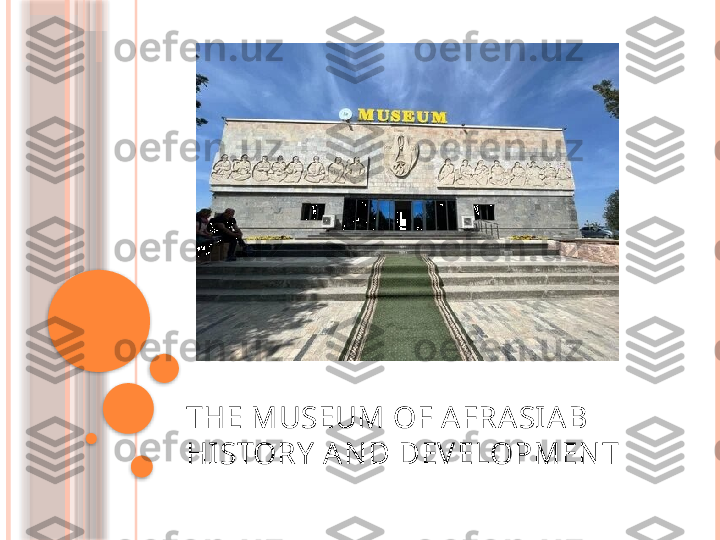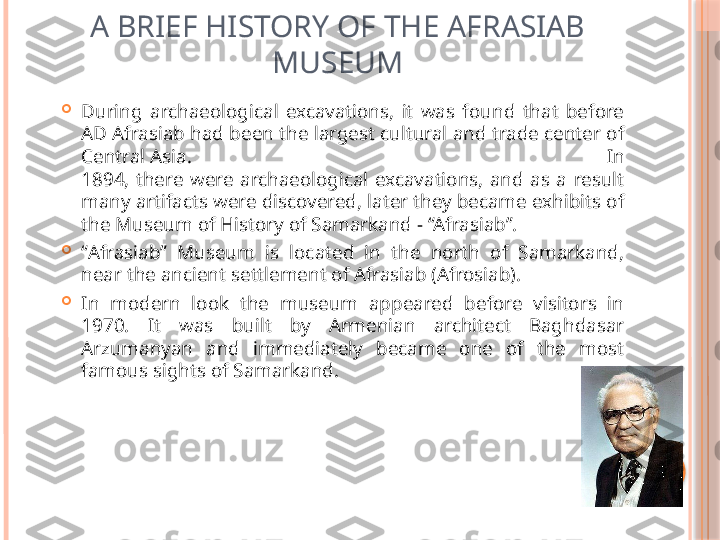The Museum of Afrasiab history and development


THE MUSEUM OF AFRASIA B HISTORY AN D DEV ELOPMEN T
A BRIEF HISTORY OF THE AFRASIAB MUSEUM During archaeological excavations, it was found that before AD Afrasiab had been the largest cultural and trade center of Central Asia. In 1894, there were archaeological excavations, and as a result many artifacts were discovered, later they became exhibits of the Museum of History of Samarkand - “Afrasiab”. “ Afrasiab” Museum is located in the north of Samarkand, near the ancient settlement of Afrasiab (Afrosiab). In modern look the museum appeared before visitors in 1970. It was built by Armenian architect Baghdasar Arzumanyan and immediately became one of the most famous sights of Samarkand.
“ Afrasiab” Museum tells the story of life, culture and traditions of the people who inhabited this area in very different eras and left their mark in the form of works of art, household items, and tools. Thanks to archaeological findings, scientists were able, as a mosaic, to restore the full picture of the appearance of the city, people's daily lives, and the significant events that took place in this territory. They also managed to find out how looked, and was arranged Samarkand in ancient times.
THE COMPOSITION OF THE ROOMS OF THE AFRASIAB MUSEUM The museum's collection is divided into several sections, each dedicated to a different period of Afrasiab's history. Some of the most notable exhibits include: The Hall of Pottery, which features ancient ceramics from the 7th-8th centuries BCE to the 13th century CE. These include examples of Sogdian, Persian, and Chinese pottery, as well as ceramics from neighboring regions such as Khwarezm and Kashgar
